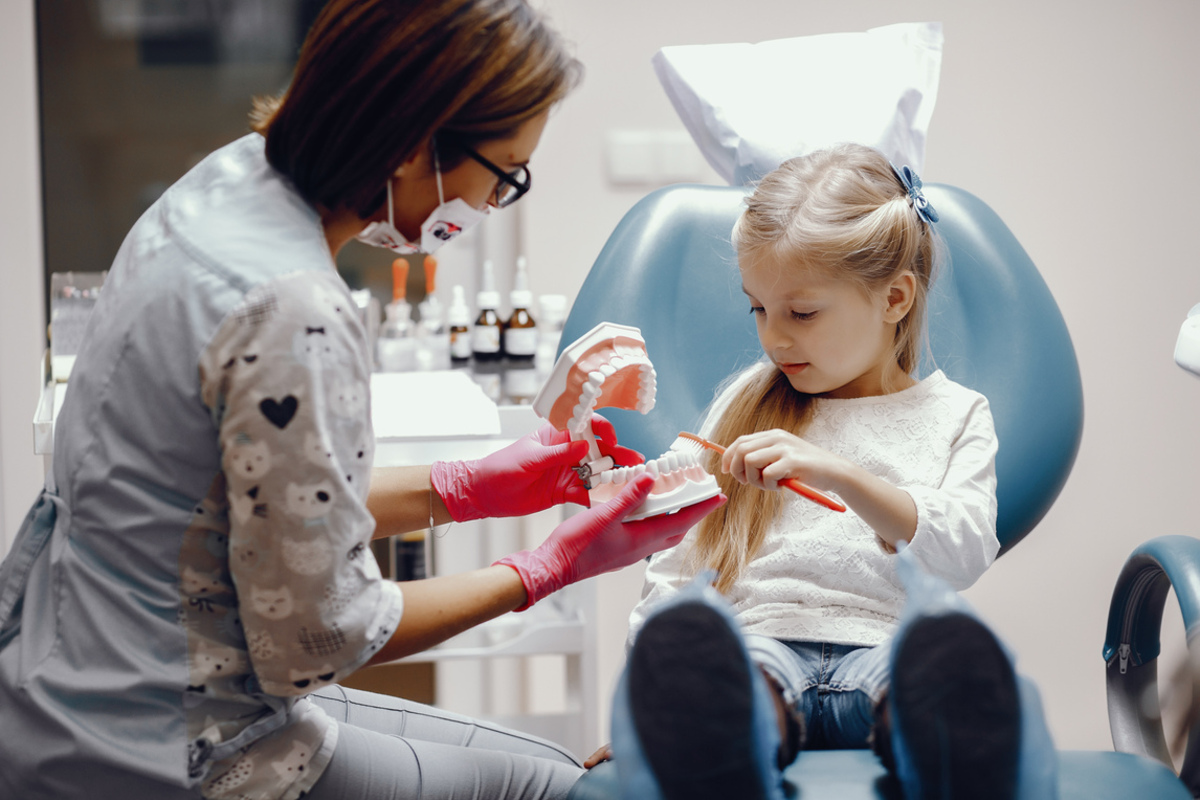What is periodontal disease? Is it the same as gum disease?
Periodontal disease is commonly known as gum disease. In most cases, this can be completely avoided or treated. A mild form of periodontal disease is fairly common in children and usually occurs due to inadequate cleaning of teeth. It always starts with inflammation of the gums or gingiva around the teeth. This is called gingivitis. If it is left unchecked, it will progress into the underlying soft tissue and bone destroying the structures supporting the teeth and hence lead to loosening of teeth. This stage is more severe and is called periodontitis.

Causes of periodontal disease in children
If gingivitis is left untreated, deep periodontal pockets may be formed in the gum line next to the tooth, where deposits are present. This will slowly lead to the dissolution of the underlying bone and supporting structures and receding gums or loosening of teeth.
Another time period where an increase in gum disease in children can be sudden is during puberty. There is an increase in hormones like progesterone and estrogen at this time leading to increased vascularity to the gums which makes the gums more sensitive to the presence of plaque.
Children at risk of developing periodontal disease
- Those who have a genetic predisposition to gum disease.
- Children with gaps between their teeth where food can get stuck.
- Mouth breathers have been shown to be more prone to gum disease.
- Children who have a habit of night grinding or tooth clenching.
- Children suffering from syndromes including Kindler Syndrome, Down’s Syndrome and Papillon–Lefèvre syndrome.
- Children who have certain medical conditions, like Type I Diabetes or heart disease, have also found to have gum disease more commonly.
- Children taking medications which cause inflammation of the gums as a side effect.
- Special-needs children or those suffering from any physical handicap which prevents them from maintaining an adequate level of oral hygiene.
Symptoms of periodontal disease in children
- Bright red, spongy, swollen gums.
- Bleeding from gums on slight touch or during brushing or flossing.
- A foul odor emanating from mouth despite brushing and flossing.
- Pus oozing out of gums next to teeth.
- Receding gums making the tooth or teeth appear longer.
- Loose or mobile teeth.
- The appearance of new gaps and spaces between teeth.
Diagnosis of periodontal disease in children
The diagnosis of gum disease is based on a clinical examination of the teeth and gums. This will include visual inspection, probing depth measurement, as well as x-rays to check the level of of the bone around the roots of the teeth. The degree of gum disease can vary greatly, from mild to severe.
How is periodontal disease treated?
The earlier the presence of gum disease is confirmed, the better it can be treated.
- The first line of treatment is always regular cleaning by the dentist once every six months along with brushing twice a day and flossing at least once a day.
- Mouthwash containing Chlorhexidine Gluconate may be recommended to children old enough to use it.
- In case of presence of deep deposits, deep cleaning, root planning or curettage may be recommended. These are done under anesthesia to prevent discomfort to the child. Once the infected tooth and root surfaces are cleaned the gums may reattach to the teeth.
- Antibiotics in the form of pastes may be applied in the pockets or given in pill form.
- In case of severe bone loss or damage, Periodontal surgery may be recommended. This allows the removal of severely damaged and infected tissue and reshaping of gums. Artificial bone grafts mimicking real bone and soft tissue membrane are available today to restore good periodontal health post-surgery.
Prevention of periodontal disease in children
- Brushing twice a day for two minutes each time in an up-down or circular motion. Start brushing your child’s teeth as soon as the first tooth appears in the mouth.
- Use of a fluoridated toothpaste after the child turns one. Start with a rice-grain sized amount to a pea-sized amount when the child learns to spit.
- Floss your child’s teeth as soon the gaps between the teeth close.
- Teaching the child to gargle post every meal or drink.
- Maintenance of a healthy diet, which is low in sugars and starch and high in raw fibrous foods.
- Maintaining good oral hygiene yourself as you are the best example for your child.
- Visiting the dentist regularly. Your child’s first dental check-up should be done by the first birthday and should be followed up with a visit every six months.


Your thoughts on this